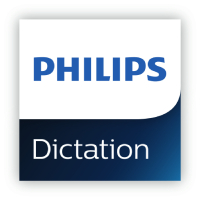 By Legal Futures Associate Philips Dictation
By Legal Futures Associate Philips Dictation
SaaS is a model where third-party providers develop software and applications and make them available on a subscription basis to customers via the cloud. This enables businesses to access the software 24/7 from anywhere with an internet connection and web browser.
SaaS has rapidly become a commonly used method for delivering many business applications, including office productivity software, payroll and accounting programs and customer relationship management software. And, increasingly, we are also seeing it becoming the favoured option for those organisations looking to introduce dictation software. Let’s take a look at why this is the case.
Top ten SaaS benefits
Shortened implementation times
SaaS applications are already installed and configured in the cloud, in contrast to on-premises solutions that can take time, human resources and money to set up. This means that users can get started right away after signing up for a subscription and either downloading a web browser extension or the application to their computer. And as the software tends to be more streamlined, making setup quicker and easier, users can start reaping the benefits of digital dictation quicker.
Automatic upgrades
Since everything is hosted in the cloud, the SaaS provider is responsible for automatic deployment of updates. This means that upgrades are straightforward and rolled out to all users at the same time, whilst also lessening the burden on internal IT staff. In contrast, on-premises upgrades can often be costly and time-consuming, with IT teams having responsibility for planning, deploying and validating upgrades.
Scalability
SaaS solutions can be easily scaled upwards in response to growing business needs, or when more users need to access the service, by adding programming, processing, bandwidth or other services. The cost of doing so includes only the functions added, not the software or hardware needed to facilitate the growth.
Accessibility
Because SaaS solutions are hosted in the cloud, they enable users to access them on mobile devices, as well as tablets and desktops, and be able to do so with relative ease, regardless of location. This is particularly important in light of the increasing adoption of remote and hybrid working by many business professionals and the important role of dictation software in facilitating this approach.
Better collaboration
Increased accessibility, as described above, can also improve collaboration as users are able to use SaaS software to access and share information more easily, brainstorm ideas and review progress in real time.
Cloud-based dictation offers a number of significant advantages for professionals working remotely, particularly when it comes to collaboration. In particular, it can enable the sharing of documents with other people for updating or editing, whilst the working versions of documents can be accessed by the original author and other people on the move to allow for instant updating and editing.
Easier integration
SaaS applications can be integrated with other platforms and systems using an open and documented API structure that makes it easy for solutions to be linked. Alternatively, many providers offer ‘bespoke’ integrations with the solutions that their customers most frequently want or need to interoperate with.
On the dictation software front, a common requirement is to integrate with workflow software in order to automate the entire document production cycle, from the initial voice recording right through to the final sign-off of the document. Dictation software is also often required to integrate effectively with other key business applications, for example practice and case management software within a legal environment.
IT staffing benefits
With hardware eliminated and the third-party providers having responsibility for developing, maintaining, hosting and updating software as well as security and disaster recover, the result is that onsite IT teams are free to focus on other more strategic tasks, or indeed it may be that fewer IT staff are required.
Interestingly, a Mint Jutras Enterprise Solution Study found only 31% of companies that had moved to SaaS had actually reduced the number of staff in their IT function. The remainder – and the majority (69%) – had redeployed people strategically, providing more opportunity for these employees to add value.
Automatic data backups
The SaaS provider will typically manage all of the backup and data protection processes. The actual level of service provided can range from simple data storage through to a full failover that transfers all functions to the recovery programming until any required repairs are made. This can play a vital role in business continuity, where the aim is to enable your organisation to bounce back from a significant technology-related problem with the minimum disruption and get back to ‘business as normal’ as quickly as possible.
Enhanced data security
Because their business is technology, cloud providers typically focus more of their efforts on security and governance issues than organisations in other sectors. They have systems in place that are faster at detecting potential intrusions and capable of quickly narrowing the scope of an incoming attack. This has resulted in greater confidence amongst digital dictation users of the ability of cloud-based providers to offer high levels of security that are capable of protecting sensitive client data from data breaches or other cyber threats.
Cost savings
Last but certainly not least, there are financial benefits – both in terms of cost savings and budgetary predictability. On the cost saving front, SaaS is subscription-based and has no up-front licence fees, resulting in lower initial costs. In addition, the SaaS provider manages the IT infrastructure that is running the software, which brings down fees for hardware and software maintenance. Furthermore, any requirement for growth in terms of the number of users supported etc. can be accommodated by simply scaling up the demand for services in the SaaS environment, rather than the need to extend or purchase a new software licence.
As far as predictability is concerned, the simple subscription fee is an operating expense (OpEx) that usually includes all updates and upgrades, and so helps from a budgetary perspective by keeping financial forecasts stable and predictable.










